Indoor gardening isn’t just about small potted plants—shrubs can thrive indoors too, offering dense foliage, air-purifying benefits, and long-lasting beauty. Whether you’re looking for compact, bushy greenery or flowering shrubs that brighten your home, these 15 indoor-friendly shrubs will transform your space into a lush oasis.
Contents
- 1 1. Aucuba japonica (Gold Dust Plant)
- 2 2. Pittosporum tobira (Japanese Mock Orange)
- 3 3. Schefflera arboricola (Dwarf Umbrella Tree)
- 4 4. Polyscias fruticosa (Ming Aralia)
- 5 5. Dracaena fragrans (Corn Plant)
- 6 6. Fatsia japonica (Japanese Aralia)
- 7 7. Dracaena reflexa (Song of India)
- 8 8. Azalea (Rhododendron spp.)
- 9 9. Camellia japonica (Indoor Camellia)
- 10 10. Daphne odora (Winter Daphne)
- 11 11. Codiaeum variegatum (Croton)
- 12 12. Gardenia jasminoides (Indoor Gardenia)
- 13 13. Mahonia eurybracteata (Soft Caress Mahonia)
- 14 14. Hydrangea macrophylla (Indoor Hydrangea)
- 15 15. Boxwood (Buxus sempervirens)
- 16 How to Care for Indoor Shrubs
- 17 Final Thoughts
1. Aucuba japonica (Gold Dust Plant)

Ideal for low-light conditions, Gold Dust Plant features gold-speckled leaves that brighten indoor spaces. It thrives with minimal care and infrequent watering.
2. Pittosporum tobira (Japanese Mock Orange)
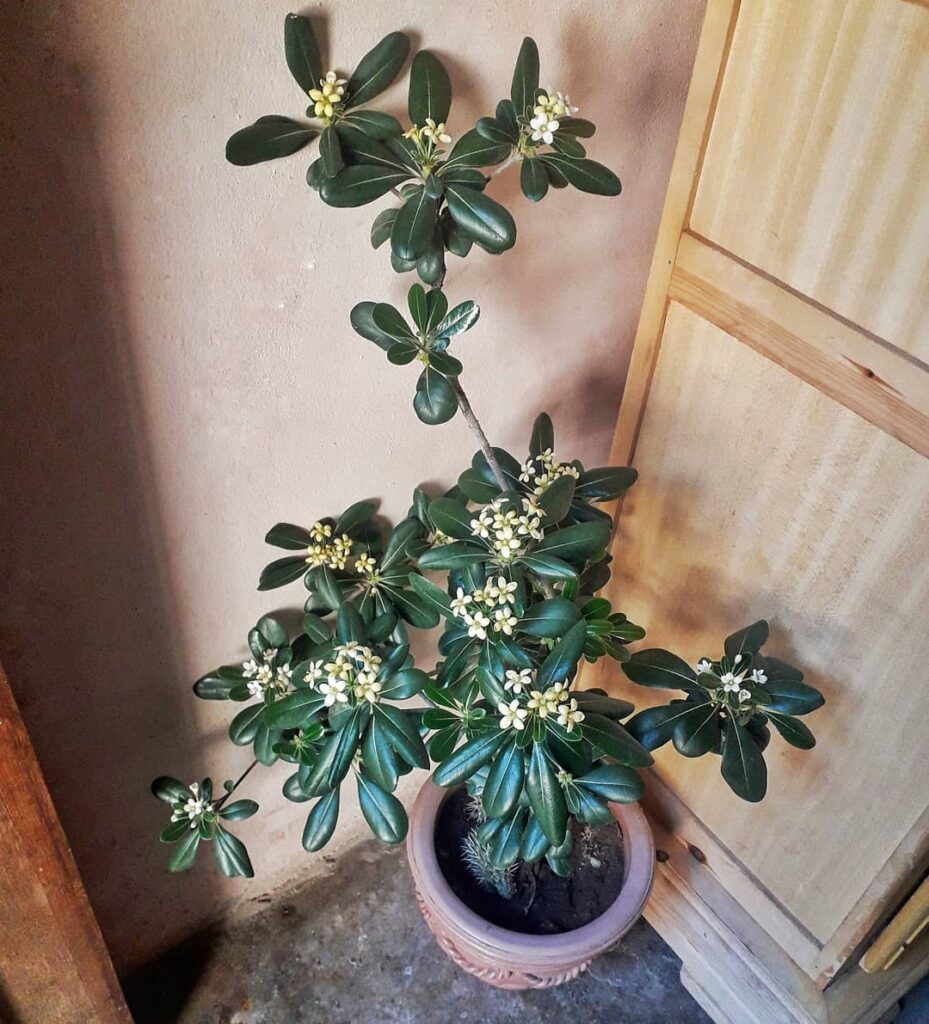
A compact, evergreen shrub with glossy leaves and citrus-scented flowers, Japanese Mock Orange adapts well to indoor containers and maintains its shape beautifully.
3. Schefflera arboricola (Dwarf Umbrella Tree)
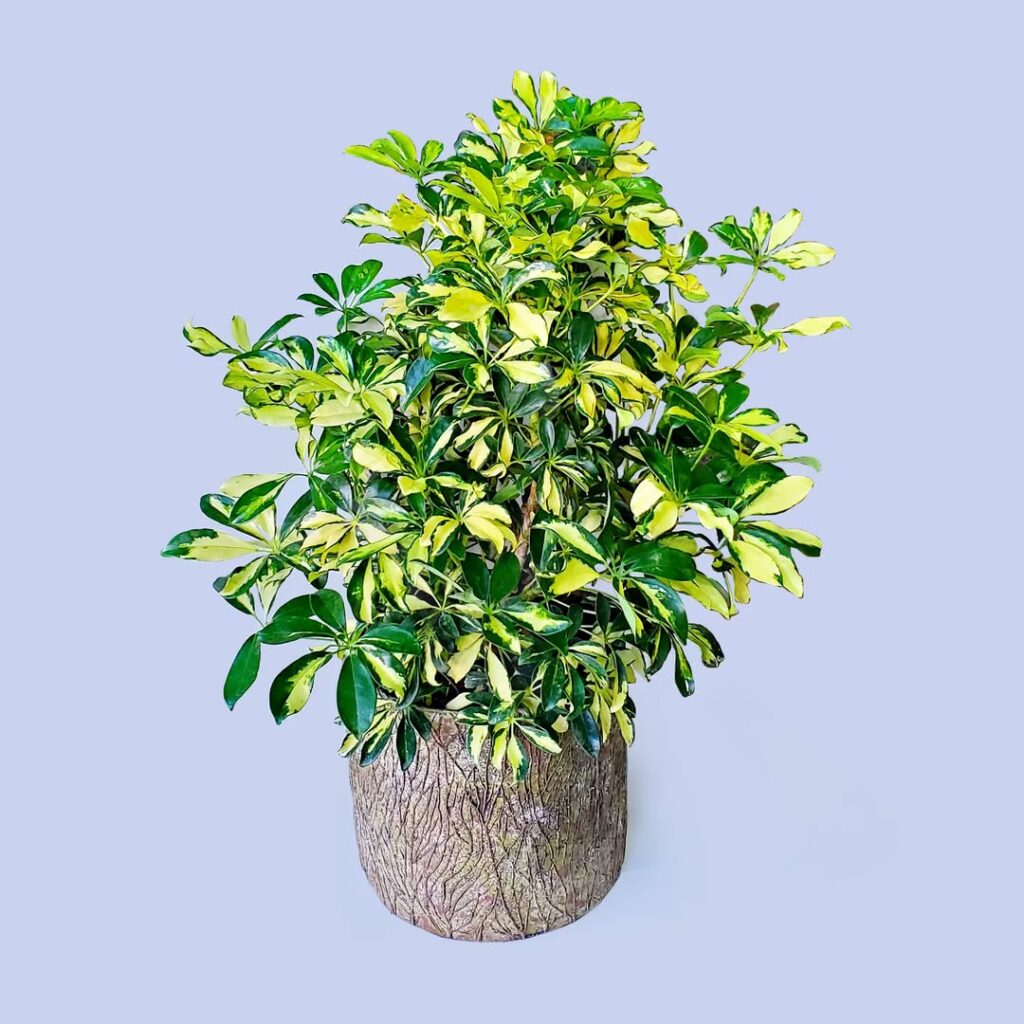
A versatile shrub with radiating leaf clusters, Schefflera arboricola thrives indoors, bringing tropical vibrance into any space. It’s tolerant of low-light conditions and responds well to occasional pruning.
4. Polyscias fruticosa (Ming Aralia)
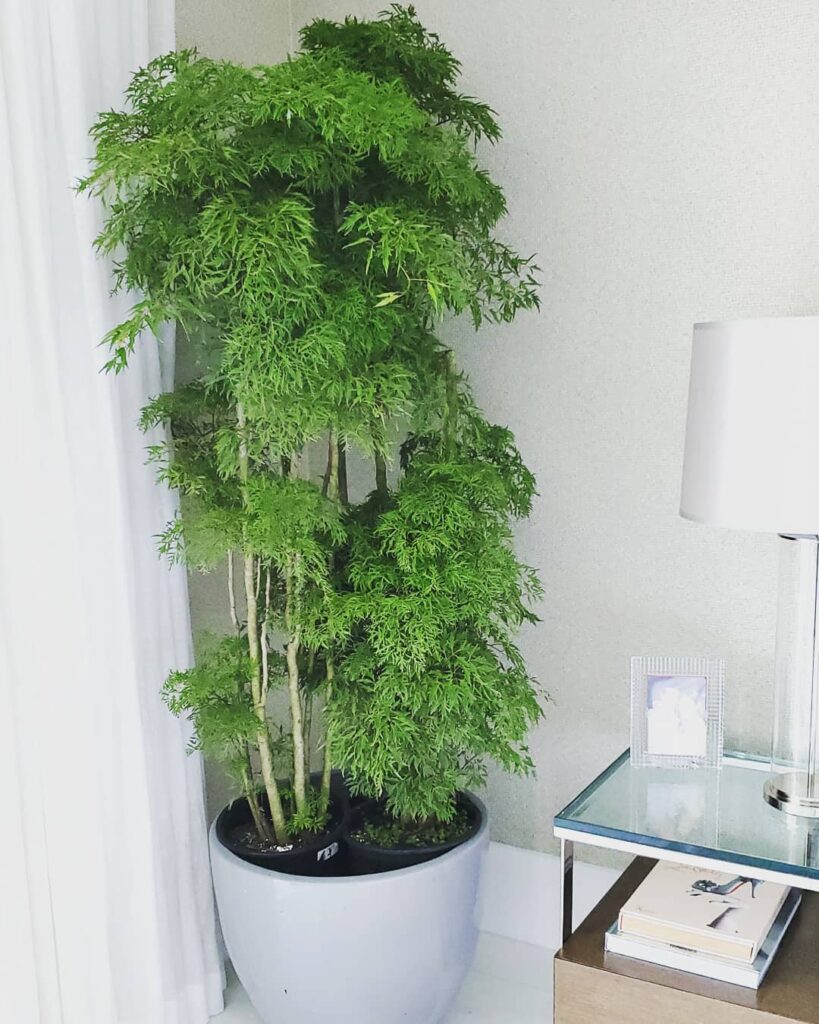
Known for its delicate, feathery foliage, Ming Aralia adds elegance and texture to indoor spaces. This slow-growing shrub enjoys warm temperatures and regular misting.
5. Dracaena fragrans (Corn Plant)
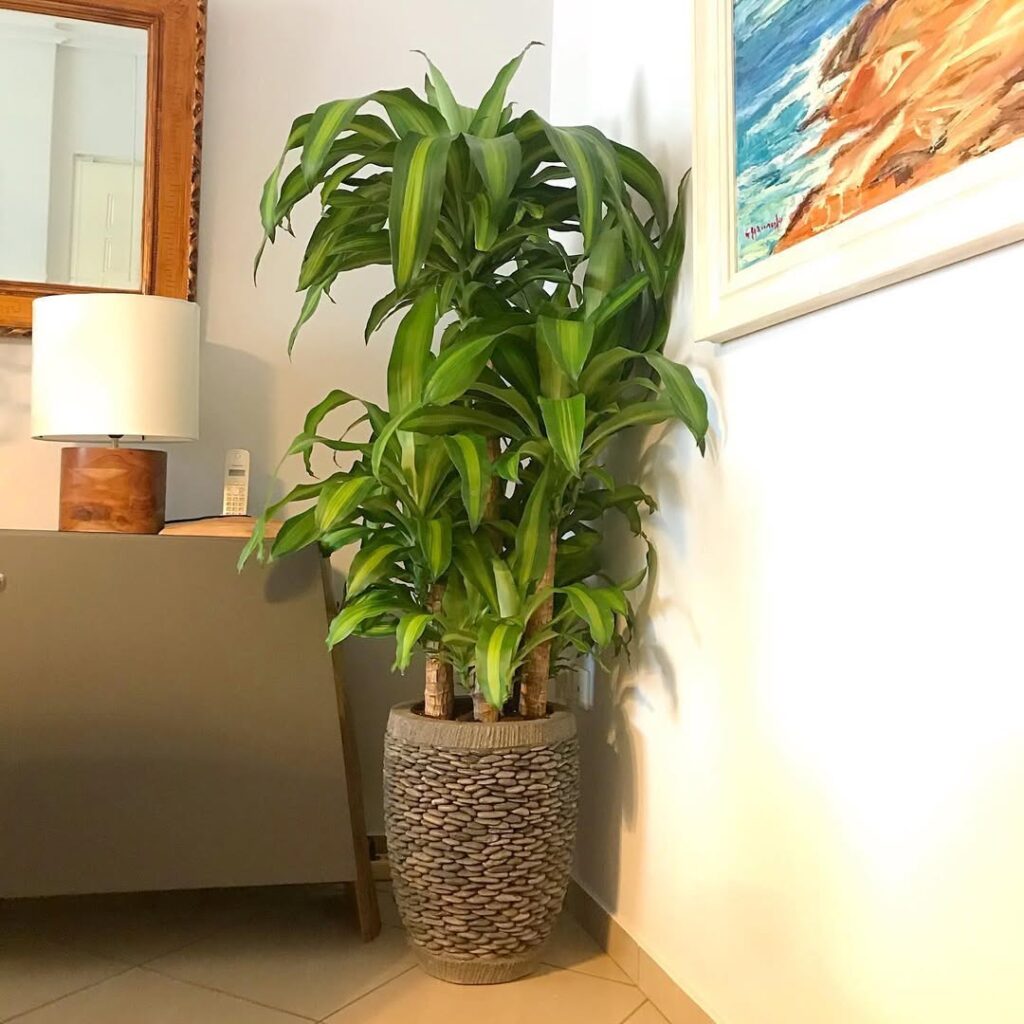
A tall, upright shrub with long, arching leaves, Dracaena fragrans is widely known for its air-purifying qualities. It thrives under moderate indirect light and can reach several feet indoors.
6. Fatsia japonica (Japanese Aralia)
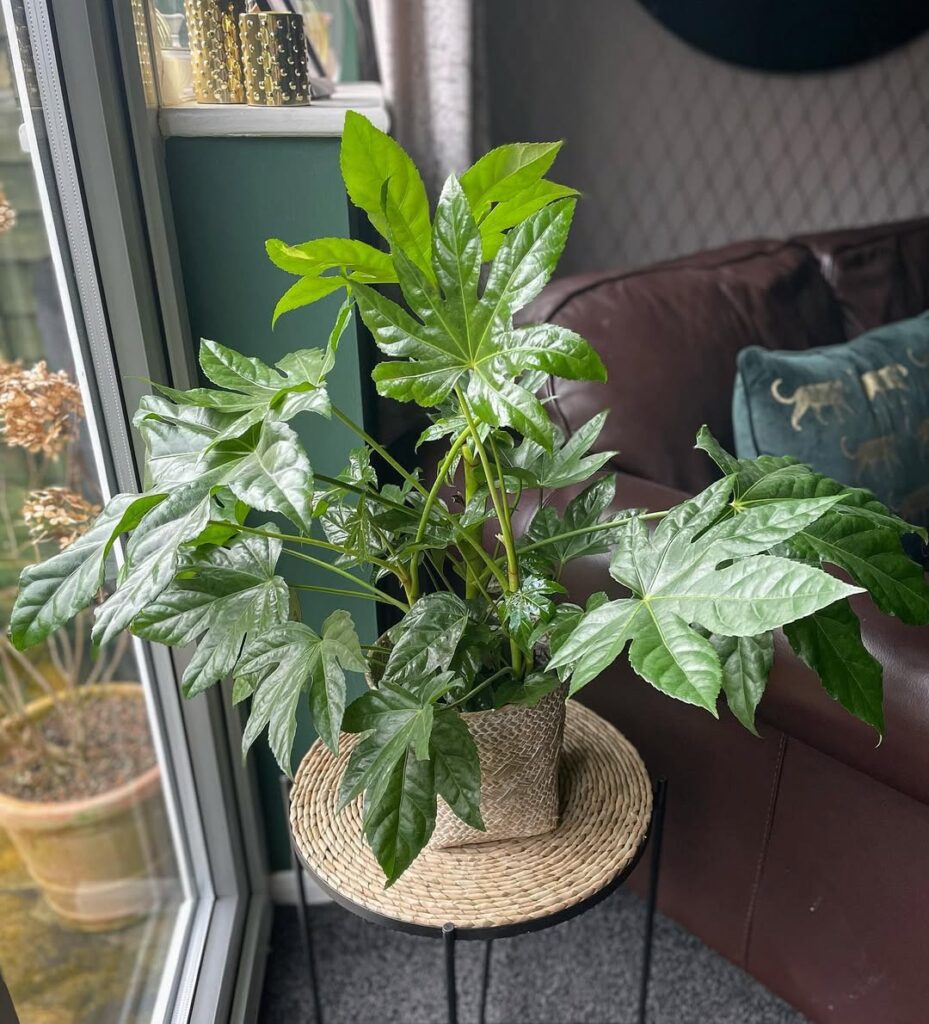
A bold shrub with large, palmate leaves, Japanese Aralia thrives in indoor conditions with moderate light and humidity.
7. Dracaena reflexa (Song of India)
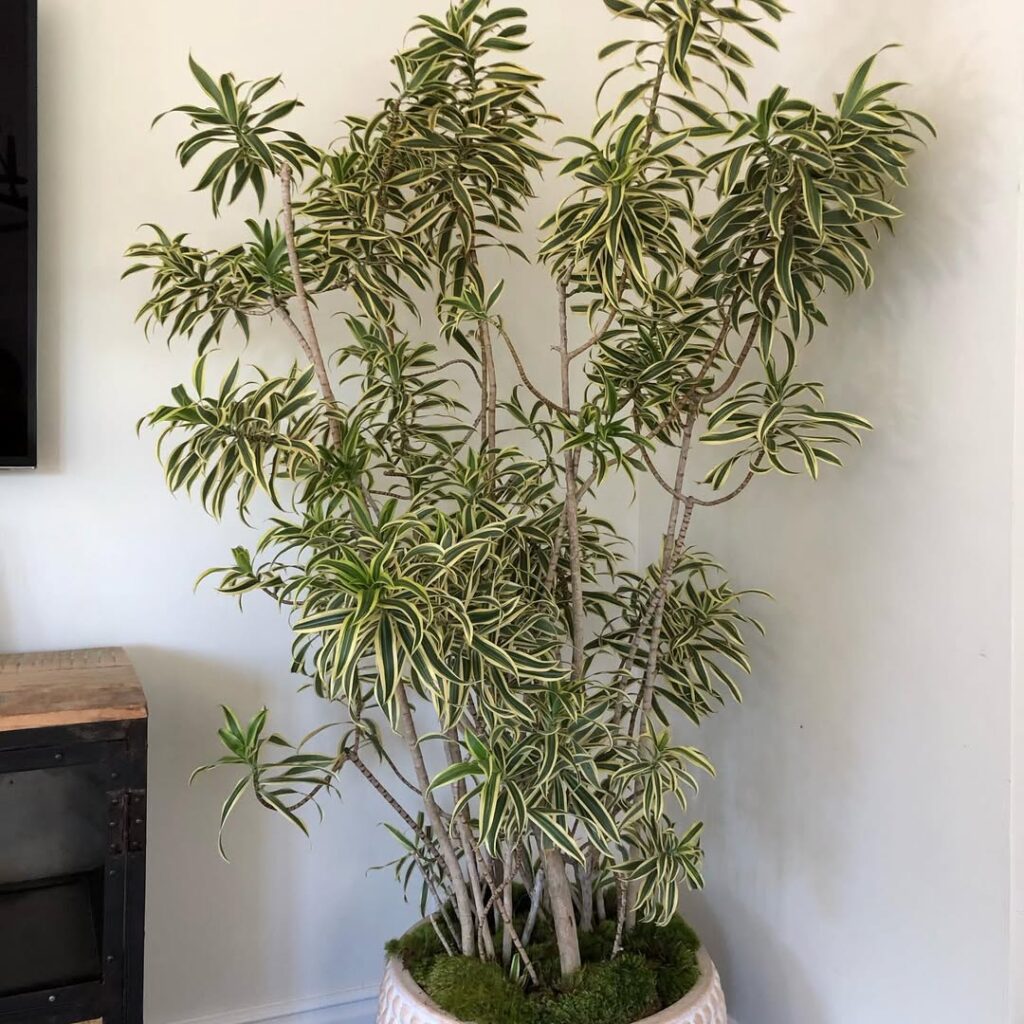
This visually striking shrub boasts yellow-edged green leaves that create a bold statement in indoor gardens. It’s hardy and requires only occasional watering, making it great for busy plant lovers.
8. Azalea (Rhododendron spp.)
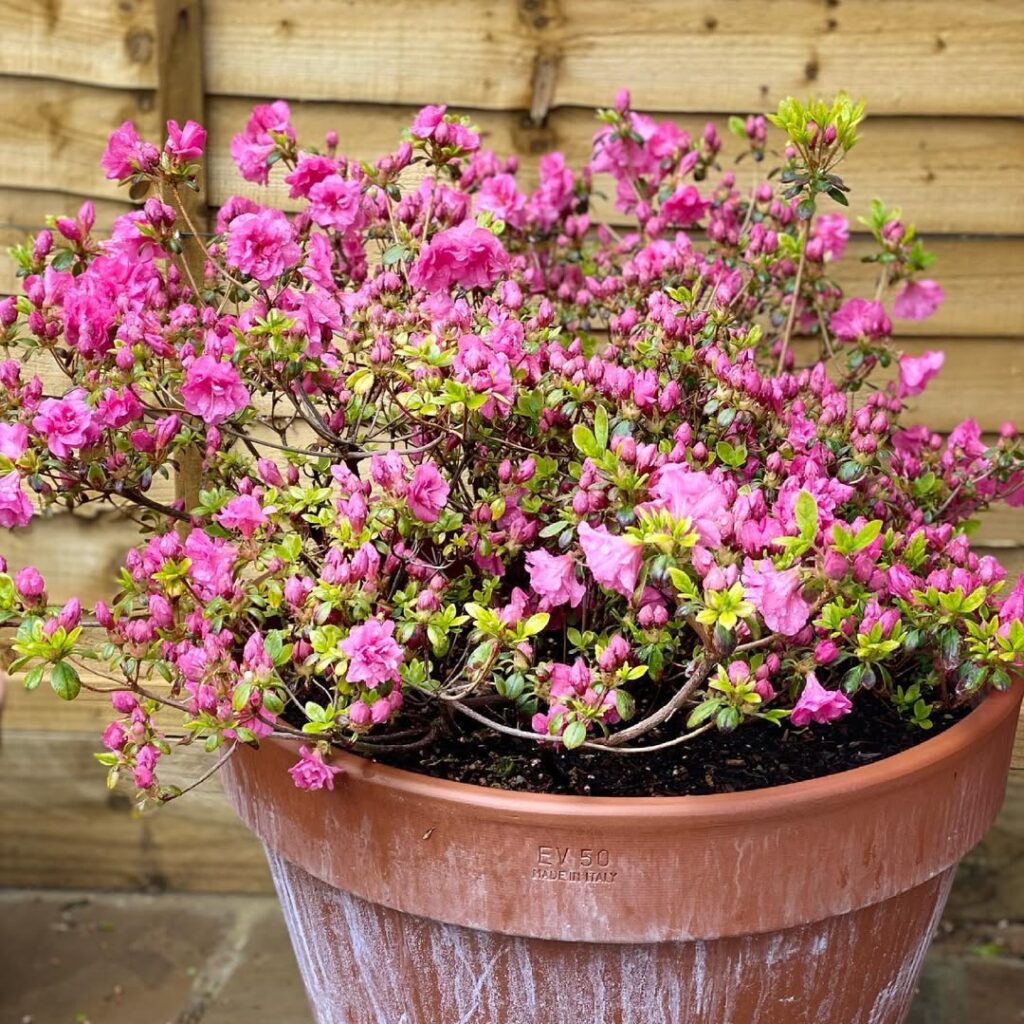
This vibrant flowering shrub thrives indoors with bright light and cool temperatures, producing stunning pink, red, or white blooms.
9. Camellia japonica (Indoor Camellia)
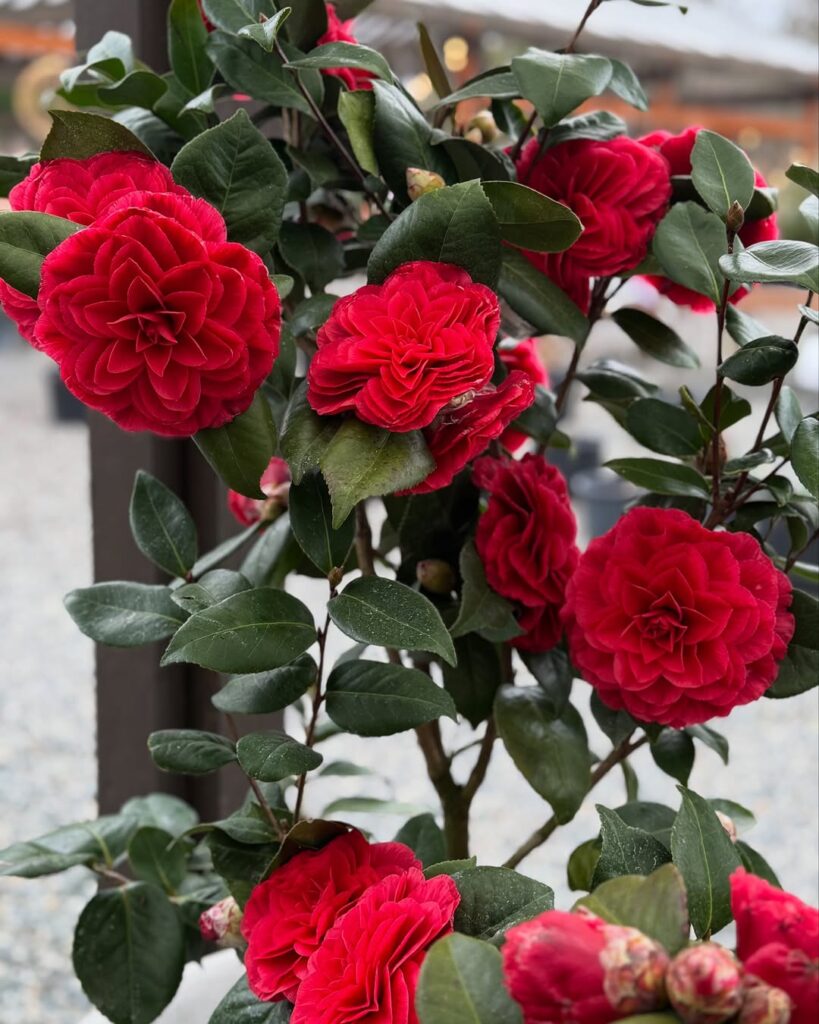
A rare indoor shrub option, Camellia japonica produces exquisite rose-like flowers, bringing seasonal blooms indoors. It requires consistent moisture and bright indirect light.
10. Daphne odora (Winter Daphne)
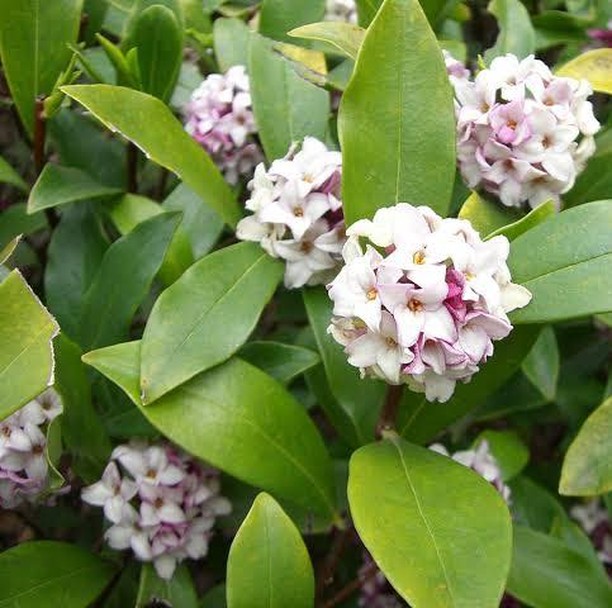
Winter Daphne is known for its deliciously fragrant pink or white flowers and evergreen foliage. It thrives in well-draining soil and indirect sunlight, making it a standout flowering indoor shrub.
11. Codiaeum variegatum (Croton)
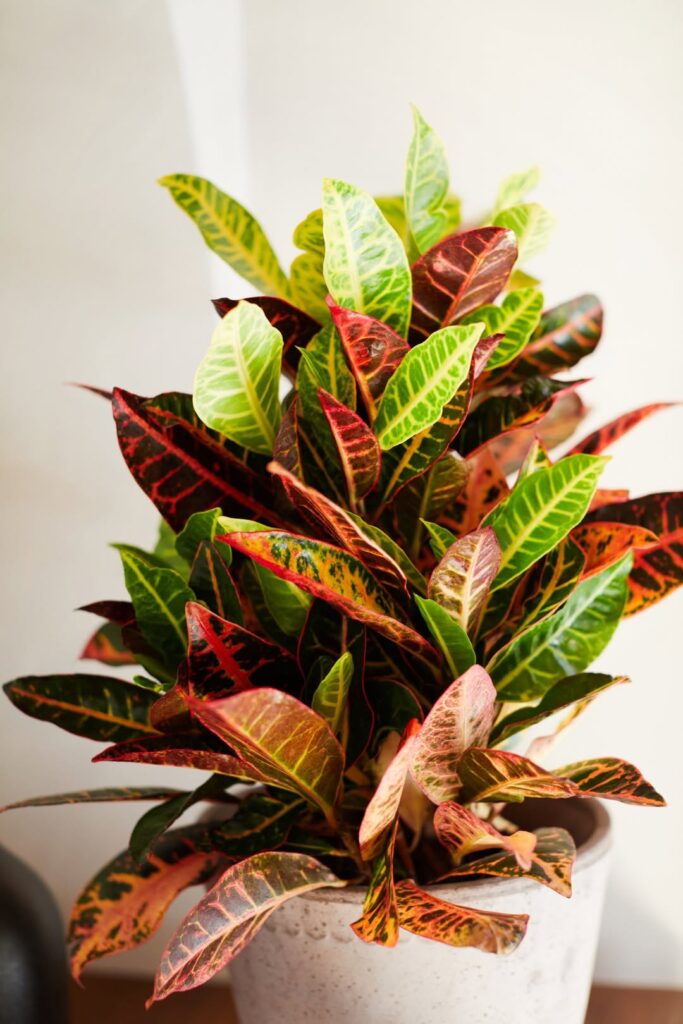
A bright, tropical shrub with colorful variegated leaves, Croton thrives in bright light and adds dynamic texture to indoor spaces.
12. Gardenia jasminoides (Indoor Gardenia)

A classic flowering shrub, Gardenia jasminoides produces sweetly scented white flowers but requires consistent humidity and indirect light to thrive indoors.
13. Mahonia eurybracteata (Soft Caress Mahonia)
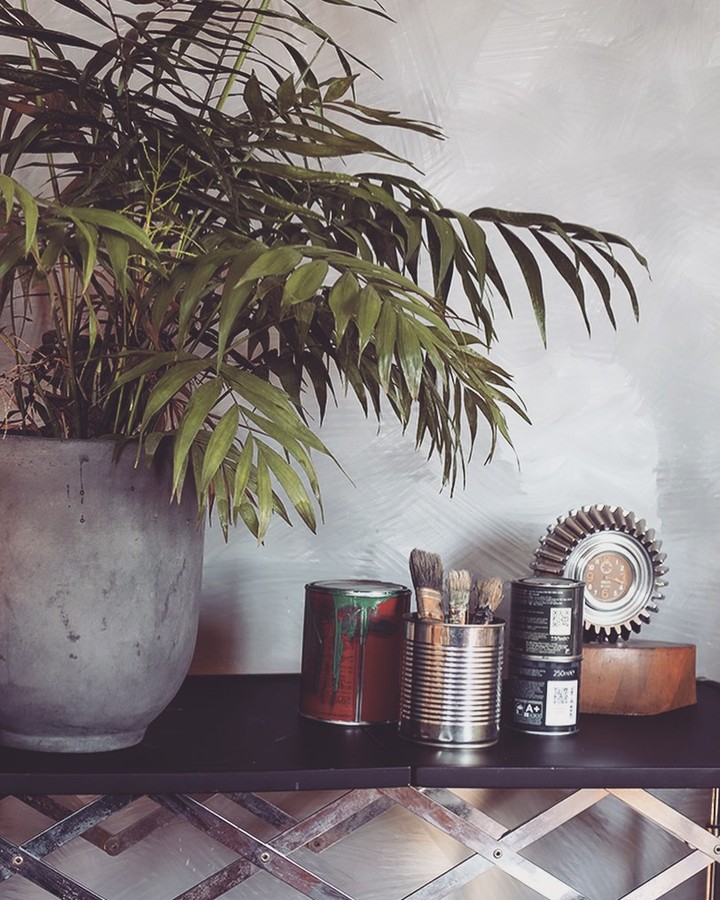
This fern-like shrub features delicate foliage, making it an excellent choice for low-light indoor environments. It’s easy to maintain and adapts well to container growth.
14. Hydrangea macrophylla (Indoor Hydrangea)
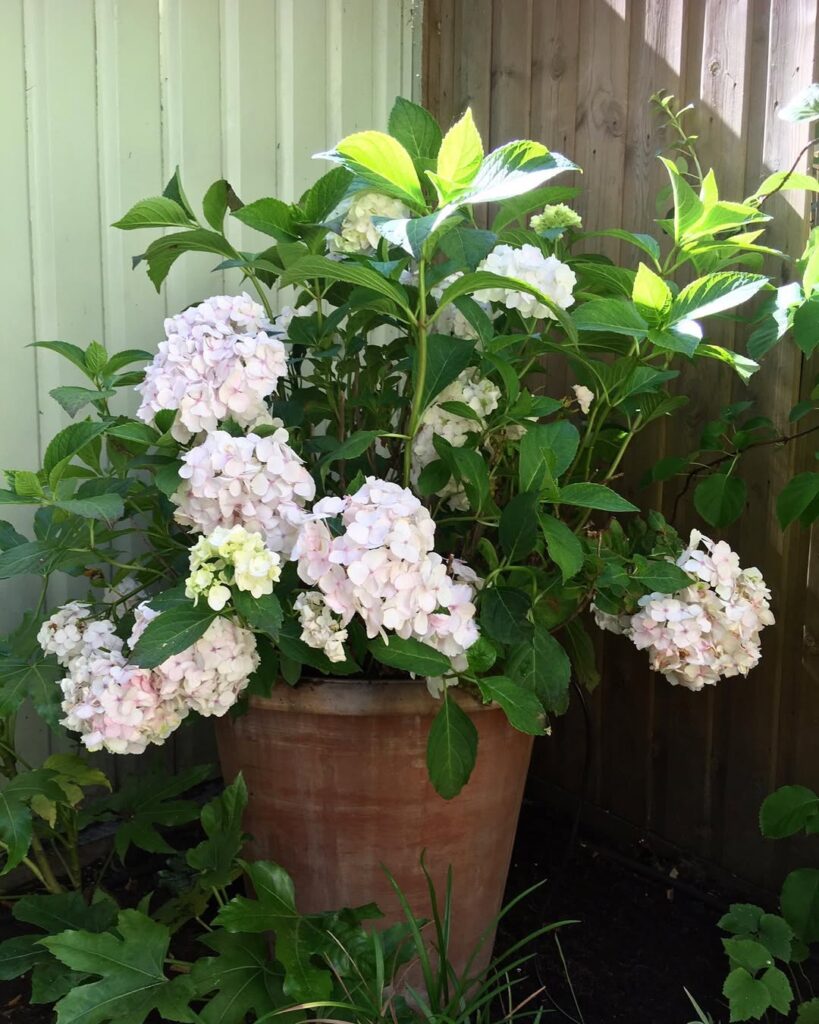
With large, colorful blooms, Hydrangea macrophylla is one of the few flowering shrubs that can be cultivated indoors. It requires bright, indirect light and regular watering.
15. Boxwood (Buxus sempervirens)
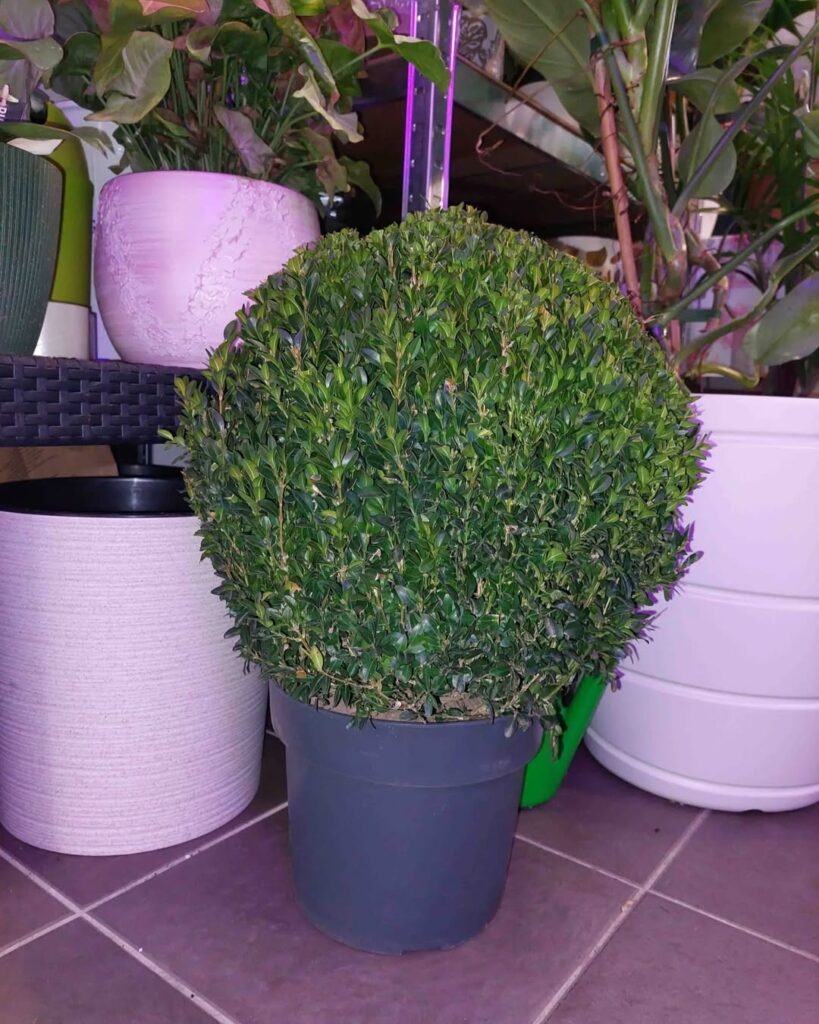
A classic evergreen shrub, Boxwood is perfect for structured indoor greenery. It adapts well to container growth, offering dense, compact foliage that can be pruned into neat shapes.
How to Care for Indoor Shrubs
1. Light Requirements
Most indoor shrubs thrive in bright, indirect light, though some tolerate low-light conditions. If natural light is insufficient, consider using grow lights to maintain healthy foliage.
2. Watering Guidelines
- Avoid overwatering, as many indoor shrubs prefer slightly dry soil between waterings.
- Flowering shrubs like Gardenia and Camellia need consistent moisture but should never sit in waterlogged soil.
3. Temperature & Humidity
- Many indoor shrubs thrive in temperatures between 65–75°F (18–24°C).
- Some tropical species, like Ming Aralia and Gardenia, benefit from higher humidity levels. Using a humidifier or misting the leaves can help.
4. Pruning & Maintenance
- Regular pruning keeps shrubs compact and healthy, preventing legginess.
- Trim away yellow or damaged leaves to maintain a fresh appearance.
- Some shrubs, like Boxwood and Schefflera, can be shaped to match indoor décor styles.
5. Choosing the Right Containers
- Opt for well-draining pots to prevent root rot.
- Use a soil mix suited to your specific shrub type (e.g., acidic soil for Gardenia).
Final Thoughts
Growing shrubs indoors is an excellent way to bring lush greenery, air purification, and even seasonal flowers into your home. Whether you prefer low-maintenance foliage plants like Boxwood and Weeping Fig or flowering shrubs like Camellia and Gardenia, these 15 varieties are well-suited to indoor environments.
